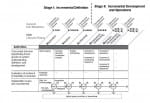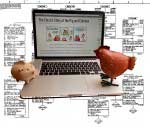One of the greatest challenges for anyone in Information Technology is managing scope. Scope creep is a bane to a project’s success metrics. Scope creep occurs for a variety of reasons like poor change control practices, not understanding project objectives, poor requirements practices, poor communication and even poorly skilled project team members, project managers and […]
Agile Manifesto
Jim Highsmith is one of the authors of the Agile Manifesto and its official historian.1 Highsmith said: On February 11-13, 2001, at The Lodge at Snowbird ski resort in the Wasatch mountains of Utah, seventeen people met to talk, ski, relax, and try to find common ground and of course, to eat. What emerged was […]
Adaptive Software Development
Adaptive Software Development (ASD) embodies principles that teach continuous adaptation to the work at hand is the status quo. ASD was created to replace traditional Waterfall variants. In a general sense, ASD processes represent a repeating series of speculate, collaborate and learn cycles. “Speculate” refers to the planning paradox—outcomes are unpredictable, therefore, endless suppositions on […]
Incremental Commitment Model
The Incremental Commitment Model (ICM) was presented in 2006 in a paper titled Using the Incremental Commitment Model to Integrate System Acquisition, Systems Engineering, and Software Engineering written by Barry Boehm (Spiral Model) and Jo Ann Lane, a Principal at the University of Southern California Center for Systems and Software Engineering. The ICM model emerged primarily […]
Legend of the Chicken and Pig
The Scrum framework consists of Scrum Teams and their associated roles; Time-Boxes, Artifacts, and Rules. Every Scrum team has a ScrumMaster responsible for making sure Scrum practices are followed and impediments to progress removed. The ScrumMaster does not manage the team. Teams are self-organizing with no more than 7 members. There is a Product Owner […]
- 1
- 2
- 3
- …
- 7
- Next Page »






Recent Comments